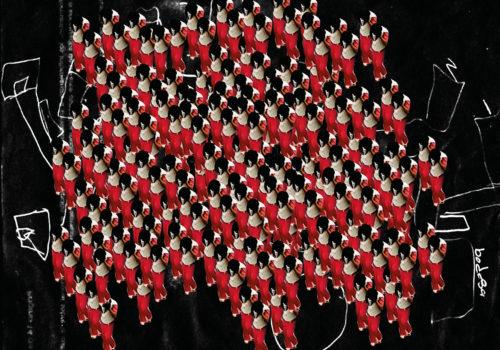There’s a picture I made of General Douglas MacArthur in his plane, The Bataan, on a flight he was making to watch the dropping of U.S. paratroopers near Pyongyang late in the Korean War. There was only a handful of correspondents and photographers aboard, nested back at the tail end of the plane. The general was sitting up forward. We were not to talk to him or photograph him during the flight. But when I saw him sitting there with his hat off, I decided to take the chance. I had never photographed him with his hat off, and I don’t know anybody else who did. He didn’t want to be photographed, showing his hair combed over a bald spot, as you see him in that picture. What motivated me was the rule he once laid down to me: “I will not allow you to come into my home or my office and photograph me in posed pictures,” he said, “but if you get me doing my job in the field, you can do anything you want with me.” This was a picture of him in the field, so I preset my camera, walked up quickly in the plane, made that picture and backed away quickly.
He turned around and looked at me. He never said anything. He never said anything later either. And we have that picture.
There’s a thrill to see the picture form in front of you and to catch it. The world is in motion, and the photographer has to find some way to stop that motion for an instant. Sometimes it’s not easy, but there’s nothing that I have ever done that is more fun.”
(Interviewed January 9, 1992. Excerpted from: John Loengard, LIFE Photographers: What They Saw, Boston, A Bullfinch Press Book, 1998)
















